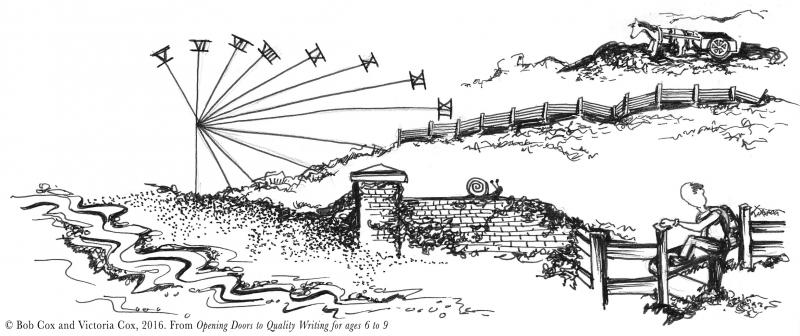- Latest NewsUp-to-date articles giving you information on best practice and policy changes.
- Skills AuditsEvaluate your skills and knowledge, identify gaps and determine training needs.
From quality text to quality writing: access strategies
Bob Cox shares strategies to support primary pupils in accessing a challenging reading curriculum and developing high quality creative writing
How can primary teachers teach to the challenging reading requirements of the national curriculum and simultaneously stimulate top-level creative writing? How can quality texts be used in primary schools to raise standards and develop a love of writers and writing?
Access strategies must be varied and creative so that all learners relish the challenge
All pupils sharing challenging objectives is fundamental, with assessment based around progress on key concepts.
This could be intimidating for pupils finding literacy skills hard to acquire as there are potential barriers to learning: harder language; more unusual cultural concepts; and complex stylistic features.
So, it follows that access strategies must be varied and creative so that all learners relish the challenge. Here I want to share some strategies I have developed through my recent work with schools and put together in the Opening Doors series.
Successful access strategies
- Using a visual which complements the text first for curiosity and predictions.
- Using question-inventing and prioritising of questions around the key concepts.
- Taking a sliver of text or a stanza or a paragraph and teaching pupils directly about language use and style.
- Asking for a taster draft quickly from pupils and starting the process of quality text stimulus.
- Using the feedback from the draft for dynamic formative assessment with a mixture of tips and advice.
- Including more teaching on figures of speech and meaning.
- Responding as appropriate to the pupils’ writing and encouraging risk-taking and fresh ideas for the next stage.
So what might these strategies look like in practice?
Introducing 'Slowly'
Before sharing the poem 'Slowly' by James Reeves, we asked KS1 pupils to link together images from this picture.

We then gave out the first line of the poem.
Slowly the tide creeps up the sand,
A continuum line helped to explore the invention of ‘slow’ images but also to differentiate between very slow and quite slow!

Taster draft
Pupils experimented with a taster draft either using new image-making with the word ‘slowly’ or by trying a different word to be repeated, e.g. ‘silently’ or ‘quickly’.
In this way the harder challenges for the more able could be integrated smoothly. The writing objective can be set as a question:
How successfully can you use repetition in a poem?
Pupils were making the journey from understanding quality poetry to writing it!
Moving towards the whole text
Whether KS1 or 2, we have rarely offered the whole challenging text at the beginning but rather built curiosity, quirky questions and new knowledge first through crafting and playing with words and style.
Pupils are completely switched on when the whole text is read and feel a huge engagement with it; more questions follow and more opportunities for direct teaching too.
There is no space for limiting children’s learning
Pupils can then be set an evaluative task requiring an overall understanding of the poem. For example:
Write about any ways in which the repetition of ‘slowly’ makes this a memorable poem.
Having learned about how to use repetition and create visual images, pupils will adily imitate, while adding their own creative spins!
To summarise: access strategies allow for interventions, flexibility and personalisation: labelling starts to be irrelevant.
As Wendy Thomas, Headteacher at Churchfields Junior, having used a range of opening doors strategies, says: ‘there is no space for limiting children’s learning’.
More inspiration: The Hell Hound
Find out how The Hound of the Baskervilles can be used to explore the building of narrative tension by downloading a sample unit from Box Cox's Opening Doors to Quality Writing: Ideas for writing inspired by great writers for ages 10 to 13
More from the Opening Doors series
Last Updated:
21 Dec 2021


